Western Australia is the largest state in Australia, a vast area of over 976,000 square miles facing the Indian Ocean to the west and north and the Southern Ocean along its southern border. The state’s population is about 2.6 million, with 92 percent living in the southwestern corner where the capital of Perth sits. North of Perth, the state is sparsely populated, isolated, and perfect for those with an adventurous spirit who are looking for an epic road trip. Here, you can swim with whale sharks and visit Australia’s Coral Coast. Here’s how to make it happen, beginning in Perth.

A Road Trip North From Perth Shows Australia's Rugged Western Coast
Editor’s note: A question on many minds is whether or not visiting Australia right now is a responsible, or even viable, option given the fires. The wildfires that have torn through the southeastern part of Australia since September 2019 have killed more than 30 people and destroyed over 3,000 homes, having an outsize impact on the whole of Australia. While this trip brings you to the opposite side of the country, supporting local businesses and the country’s tourism sector as a whole can aid in economic recovery.
Getting to Perth
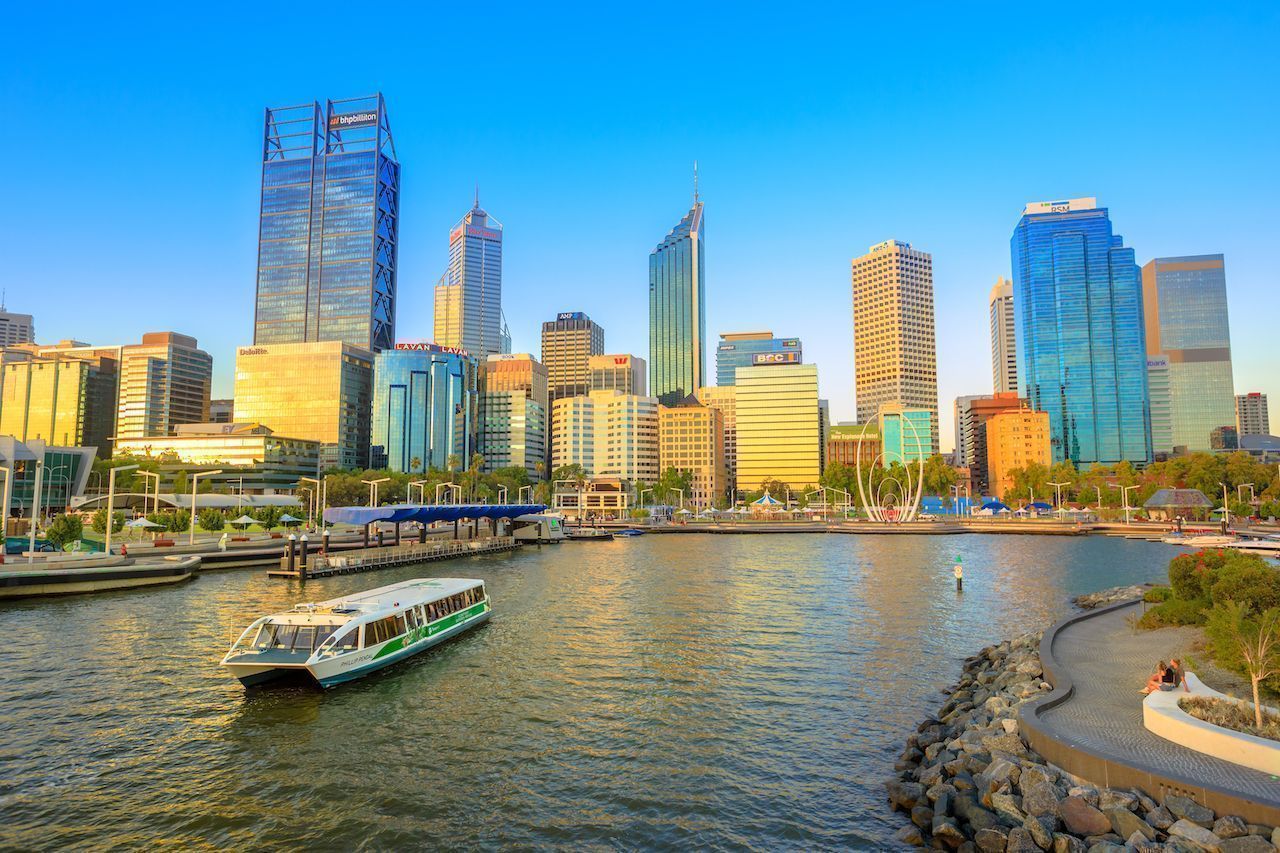
Photo: Benny Marty/Shutterstock
Perth is quite isolated from the major capital cities on the east coast of Australia and is actually closer to Asia than it is to Sydney. Australia’s major domestic airlines — Qantas, Virgin, and Jetstar — all regularly fly from the opposite side of the country. It’s about a four-hour flight east to west and about 3.5 hours west to east due to the pilots taking advantage of the jet stream that flows over Australia. Western Australia is in the same timezone as Tokyo and Hong Kong, so you gain three hours when flying from Melbourne or Sydney.
International airlines fly daily into Perth from all over the globe. The average flight time from the west coast of the USA is about 20 hours, and from Hong Kong, it’s about seven hours. There is a wide variety of hire car and RV options in Perth, so depending on your needs or budget, something is available. Bear in mind though that distances are vast in outback Australia, and some of the most spectacular locations require a 4WD vehicle to reach. Britz offers many options for 4WD rentals right in Perth.
Outer-space views, sandboarding on dunes, and a kaleidoscope of wildflowers

Photo: David Steele/Shutterstock
Your journey starts with the stretch from Perth to the seaside town of Lancelin. It’s only a 75-mile trip, and the temptation is to push on further up the coast on your first day. However, if you choose to do that, you will miss a lot of what this area has to offer, including a stop at Yanchep National Park. It’s just over 30 miles from Perth. Take guided tours of the Crystal Caves, the Koala displays, and the LochMcNess Lake, each available daily for about $11. There are also many walking tracks you can meander along on your own, and from July to September, Western Australia’s stunning wildflowers will be in bloom.
Lancelin, located in a beautiful bay protected by a reef, is an excellent base for a night or two if you plan to spend some time viewing the Pinnacles, a series of natural limestone formations. The effect of viewing them at sunset is like a sci-fi movie, so stop by to cap your day after touring Yanchep. Also worth a stop are Lancelin’s fantastic sand dunes where you can go sandboarding, 4WD touring, or just sit and enjoy the startling white beaches. Windsurfing, kitesurfing, and fishing are all available right from town. Accommodation in Lancelin ranges from youth hostels at about $47 per night up to the Lancelin Beach Hotel, from about $113 for expensive private rentals. Lancelin Caravan Park offers powered sites from $30 per night or tent sites from $24.
Visit the Galapagos Islands of the Indian Ocean
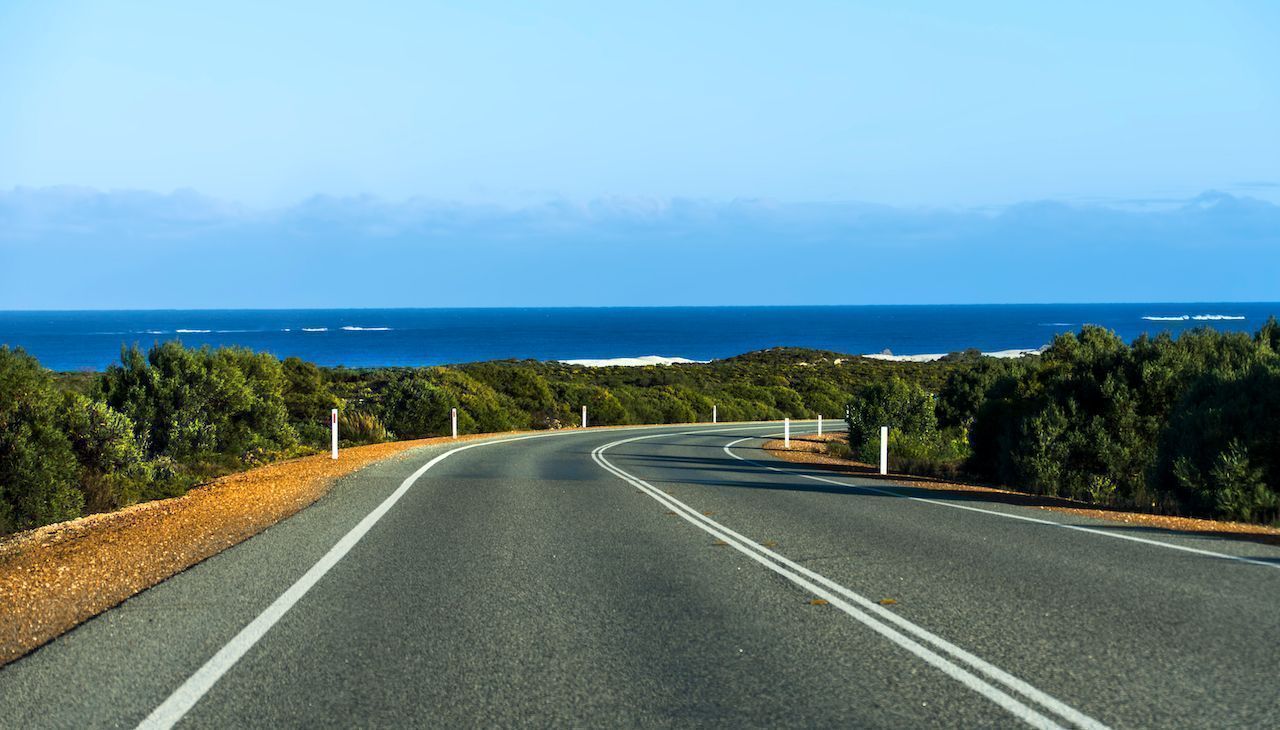
Photo: imagevixen/Shutterstock
This section of the trip follows the Indian Ocean Drive, which is relatively new and much more scenic than the old Brand Highway. Along the way, you will pass through the beachside town of Cervantes — make sure you stop at the Lobster Shack to taste some of the region’s abundant seafood. From here, it’s on to Jurien Bay where snorkeling is the order of the day. Head to Sandy Cape just north of the township to view coral and multi-colored fish.
Next stop is Dongarra, about an hour and a half north of Sandy Cape. Here, have a coffee at The Green Beanie Coffee Van or something to eat at the Starfish Cafe before you head off on the last 30-minute section to Geraldton. Overnight options range from tent sites at Dongara Holiday Park for $20 per night to various units around town up to $100. Geraldton is a small regional city of about 40,000, so all facilities are available, and there are plenty of accommodation options here as well, starting around $60.
A highlight in Geraldton — if you have the budget — is a scenic flight over the Abrolhos Islands, available from Kalbarri Scenic Flights, or an extended fishing/diving charter to the Islands. Sometimes described as the Galapagos Islands of the Indian Ocean, they lay about 40 miles off the coast of Geraldton. Fishing, bird watching, snorkeling, and diving around the coral reefs are all possible. Flights from Geraldton start from about $200.
Hang out with dolphins and visit one of Australia’s best beaches
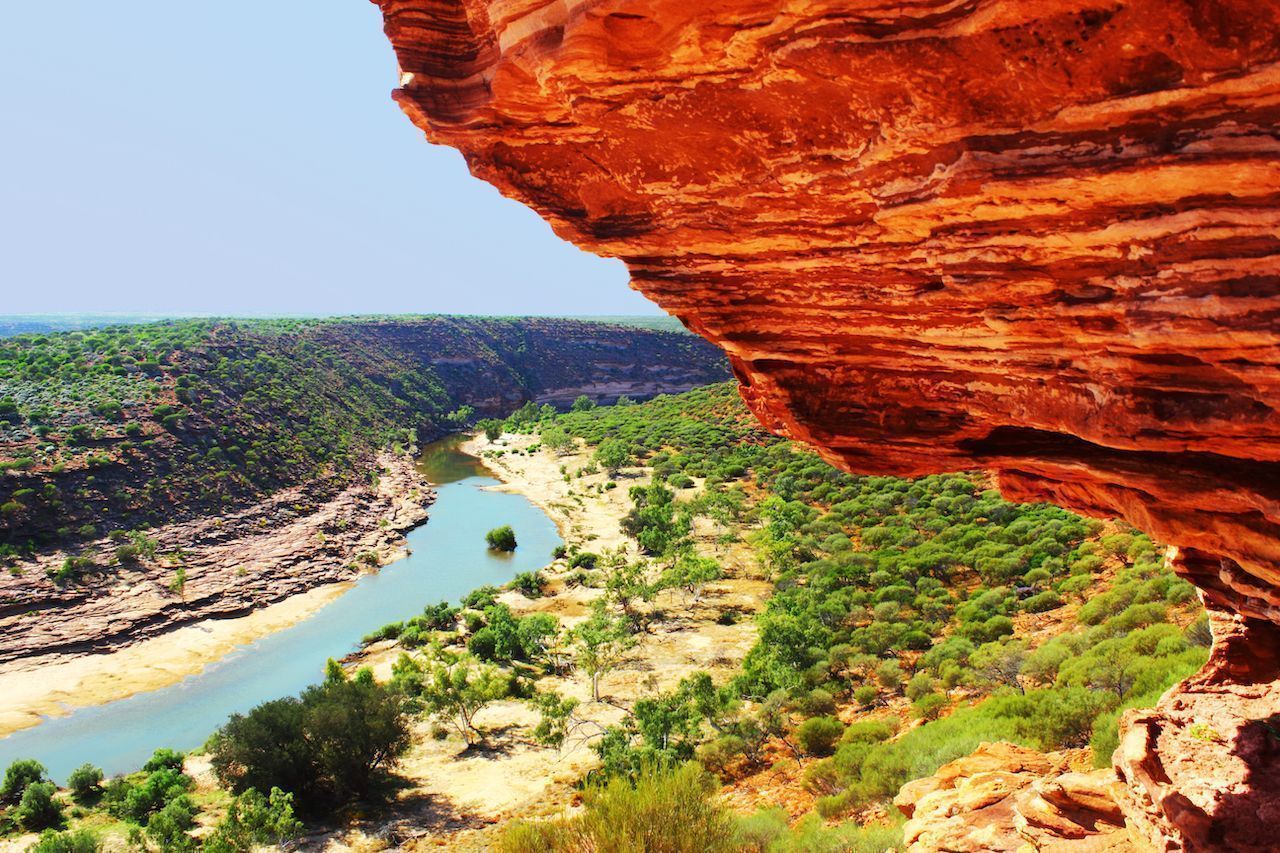
Photo: Jessika Knaupe/Shutterstock
Once you leave Geraldton, it’s on to Kalbarri, a small coastal town with towering sea cliffs that plunge more than 300 feet to the ocean. Viewing platforms from the cliffs offer spectacular photo opportunities. Afterward, drive into town for a break and to watch the pelicans being fed on the beach. Kalbarri National Park is also worth a visit should you have time to overnight in Kalbarri. The centerpiece of the park is the magnificent five-mile gorge that the Murchison River has cut through the red rock. Other sites to see in the park are the extraordinary rock formations like “Window” and “The Loop.”
From there, continue north on the Coastal Highway towards Shark Bay World Heritage Area. There are a couple of significant sights along the way at the Hamelin Pool stromatolites, which are the oldest living fossils in the world, and at nearby Shell Beach, an almost 70-mile stretch of beach that is made up entirely of tiny shells. From here, drive into Denham, the gateway to Shark Bay and a pristine coastal environment where the stark white sands of the beaches contrast with the red rocks and deep blue water. Accommodation is diverse, with choices ranging from private holiday houses down to tent sites. Denham Seaside Caravan Park is a great option. Rise early and drive to Monkey Mia to meet the famous dolphins. The pod comes to shore — often three times a day — to be fed, and you can view this remarkable event at close quarters supervised by park rangers. Afterward, enjoy breakfast and your morning coffee at one of the eating places nearby that look out over the waters of Shark Bay.
Francois Peron National Park is at the end of the peninsula in the Shark Bay Heritage Area. Access is off the Monkey Mia road about 2.5 miles east of Denham. The drive into the Peron Heritage area is dirt but accessible by 2WD, but any further north, you will need high clearance 4WD. If your budget permits, take the 4WD tour and sit back and enjoy the rugged scenery and fantastic wildlife. Head from Denham up National Route 1 to the turnoff at the Minilya Roadhouse and then on to Coral Bay.
Visit the longest fringing reef in the world
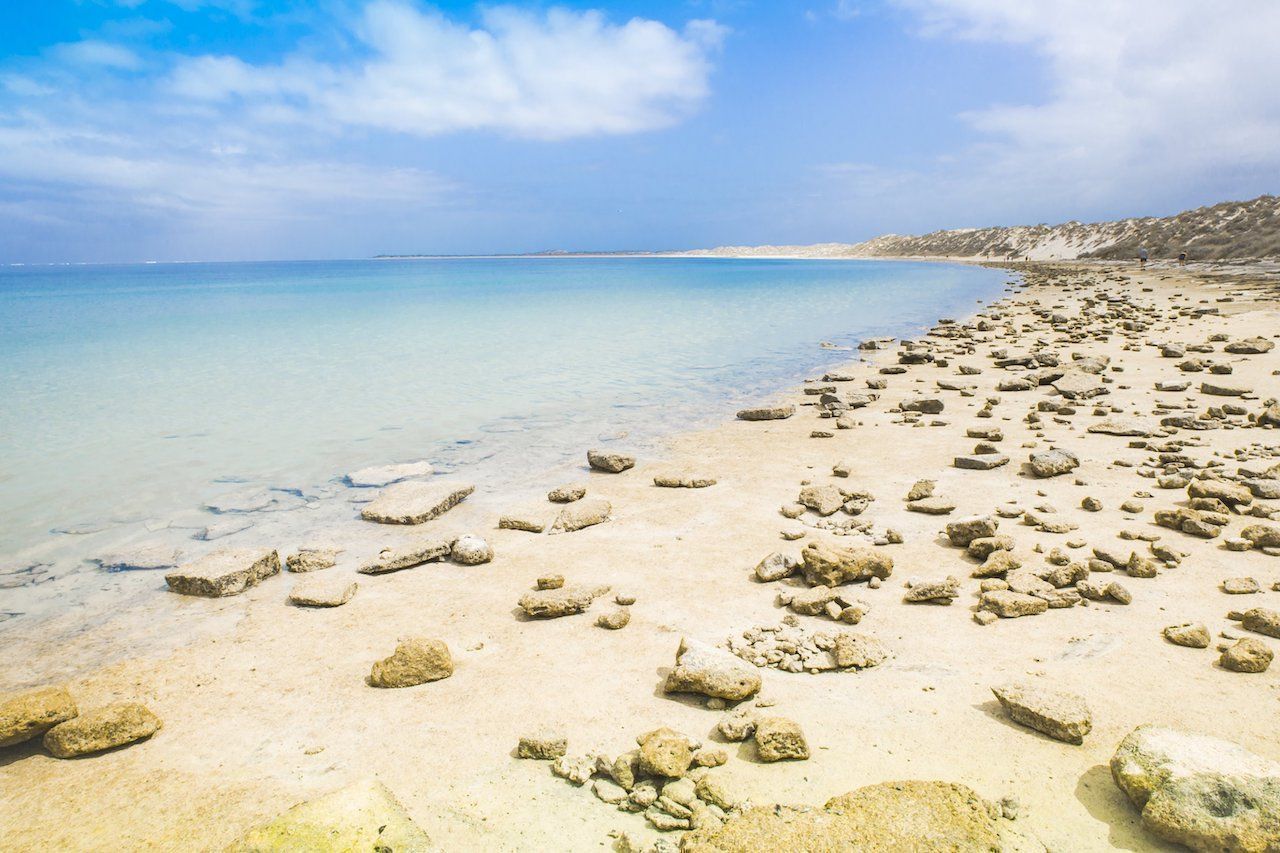
Photo: Leah Pirone/Shutterstock
About 30 miles before you get to Coral Bay, you will cross the Tropic of Capricorn. However, this part of Australia does not suffer the humidity that is typically associated with tropical climates, mild in winter though hot in summer. Coral Bay is a small town that is protected by Ningaloo Reef and named for the beautiful coral gardens just off the magnificent white-sand beach. It is a very relaxed lifestyle here with snorkeling inside the reef where the coral is very accessible for everyone, even children. Scuba and kayak tours are also available. The fishing is good but is limited to outside the marine park area near the beach. Accommodation is in high demand, with only a resort hotel and two caravan parks. Note, however, that Coral Bay is very busy during school holidays as it is a holiday destination for Western Australians.
Nearby Exmouth is a small town but has all the services you need and is surrounded by the most magnificent beaches and the longest fringing coral reef in the southern hemisphere. A trip to the lighthouse gives a perspective of Exmouth Gulf and a view of the town. Cape Range National Park near Exmouth is an excellent place to camp provided you book ahead. The sites are maintained by the Parks and Wildlife Service, and the locations are outstanding. Situated behind the sand dunes and protected by rows of trees, they have access to the fantastic beaches inside the reef. These waters are protected by the reef and provide excellent fishing, safe swimming, and snorkeling. There are many of these campgrounds throughout the park.
Swim with sharks — the gentle kind
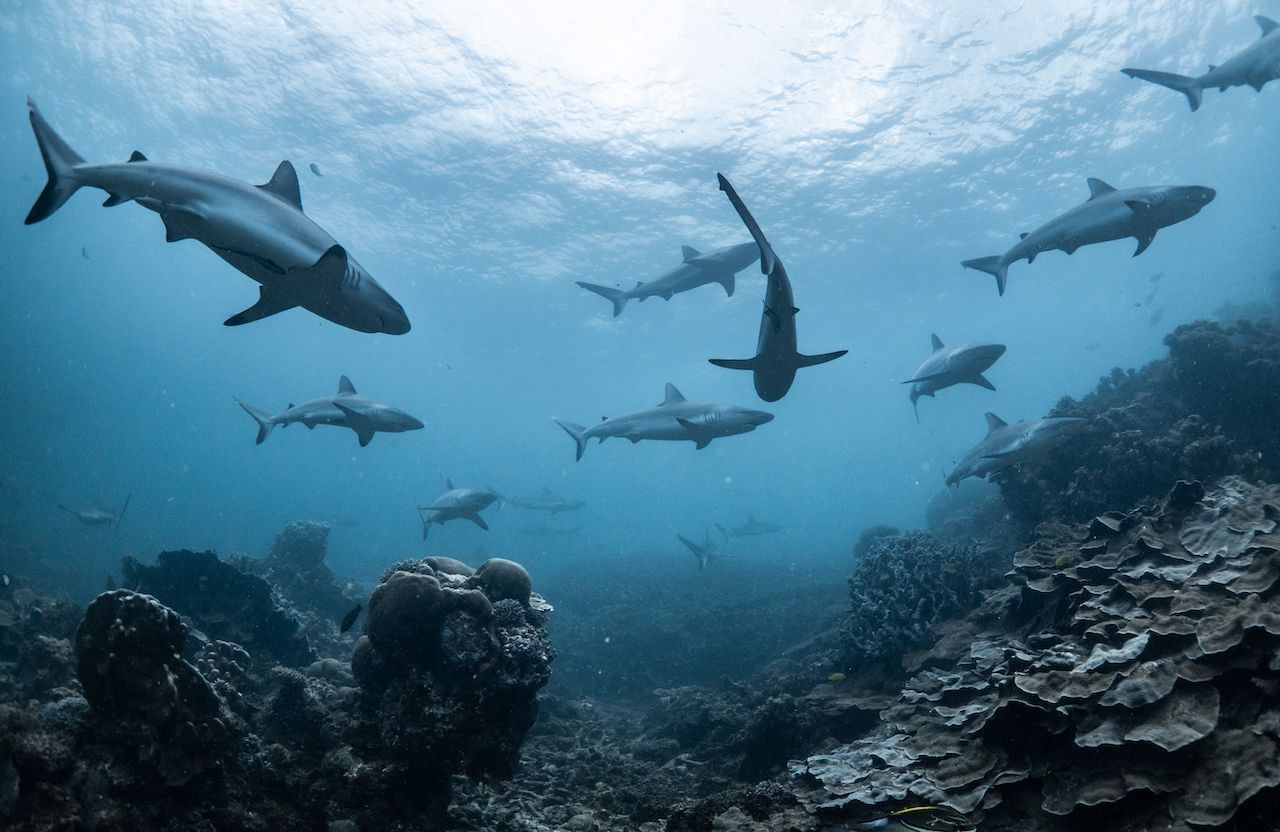
Photo: Lewis Burnett/Shutterstock
This part of Australia, Ningaloo Reef in particular, is renowned for the whale sharks that arrive around August and continue to pass through during September. Snorkeling with these spectacular gentle giants is a once-in-a-lifetime experience. Still, you can also swim with humpback whales, often with calves, that visit the world-heritage-listed Ningaloo Coast, giant rays and turtles. The World Heritage Area covers nearly 1.5 million acres and includes Ningaloo Reef, which is the longest fringing reef in the world. The marine park has over 200 species of coral and over 250 species of fish.
Join a charter tour like Ningaloo Blue Dive and you will also snorkel inside the reef and see up close not only vivid fish and coral but also turtles, rays, and reef sharks. A celebratory glass of Champagne on the cruise back to Exmouth tops off a great day. Exmouth is well catered for in terms of accommodation. The influx of visitors who arrive to swim with whale sharks means accommodation to suit all budgets is available. Backpacker lodging ranges from $20 to $100. If you have an RV, the RAC Exmouth Holiday Park is well located and has excellent facilities with powered and unpowered sites from $44. It also has tent sites from $16 and self-contained cabins running up to $130.